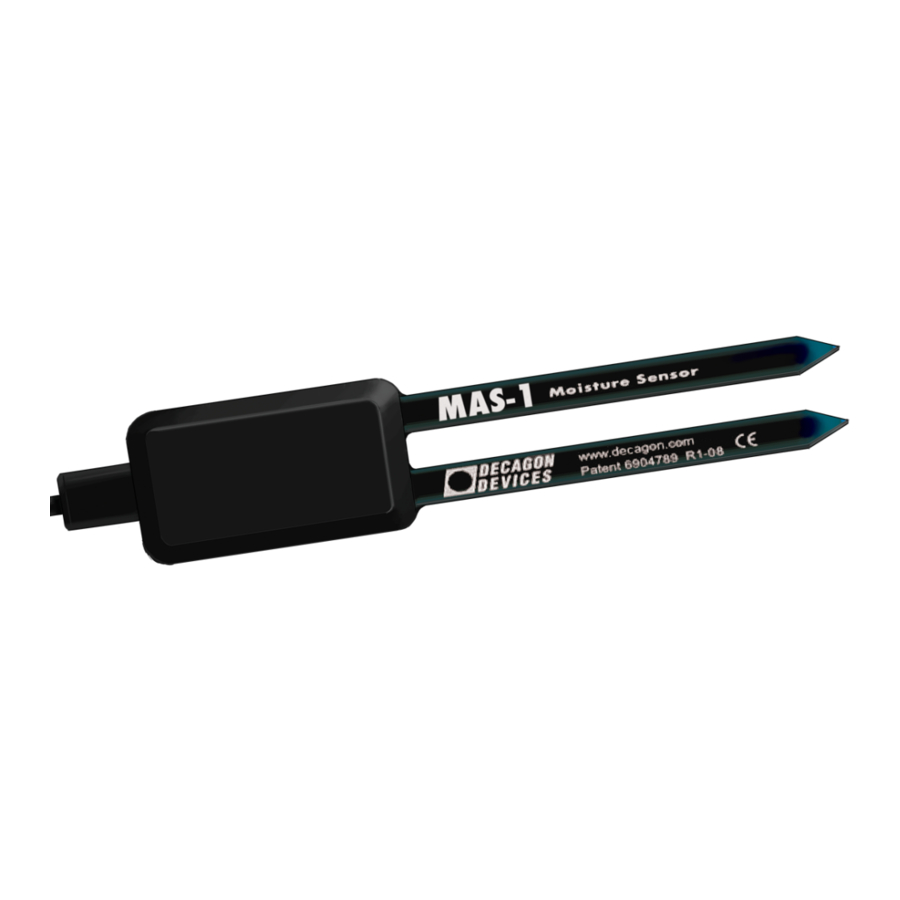Decagon Devices MAS-1 Panduan Operator - Halaman 11
Jelajahi secara online atau unduh pdf Panduan Operator untuk Aksesori Decagon Devices MAS-1. Decagon Devices MAS-1 18 halaman. 4-20 ma soil moisture sensor
Juga untuk Decagon Devices MAS-1: Panduan Pengguna (20 halaman)

3 INTEGRATING THE MAS-1
3. The MAS-1 requires only two conductors, so long lines are both
lower in noise and less expensive.
4. With the MAS-1 sensor the source impedance is small, and a
current loop is highly immune to noise on the line.
5. Measured voltage can be tailored to a particular data acquisi-
tion system simply by adjusting the value of R
application might be to use a MAS-1 with a 12 volt supply
and a R
V olt
product of the current and the resistance (Equation 1), so for
4-20 mA it would be 4 to 29 mV.
3.2
Testing the Sensor
After integrating the MAS-1 into your PLC or other data acquisition
system, it is always a good idea to test the sensor output to verify
that it is functioning correctly with your system. Two convenient
test conditions are surroundeding the sesnor with air or water. To
test in air, suspend the sensor form the cable, making sure that it is
at least six inches from any object. To test in water, place the sensor
in a bucket of tap water (do not use deionized or distilled water).
The entire sensor (prongs + black plastic electronics portion) should
be immersed in water, and should be at least two inches from any
container surface. Under these conditions, the sensor should trans-
mit in the following ranges (approximate). The air between 3.4 to
4.7 mA and tap water: 18.1 to 22.4 mA.
Note: Sensor output can go above 20 mA and below 4 mA
value of 1 ohm. The output voltage range is the
8
MAS-1
. A typical
V olt
